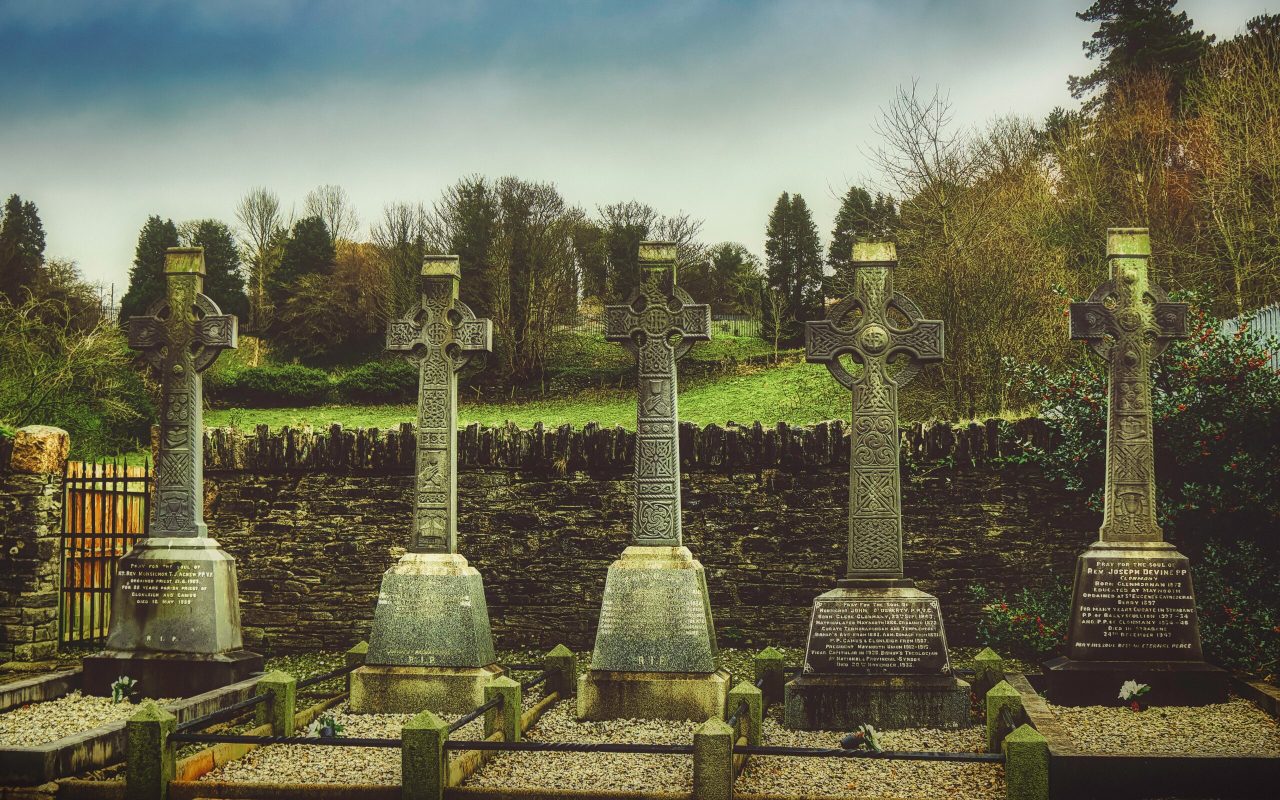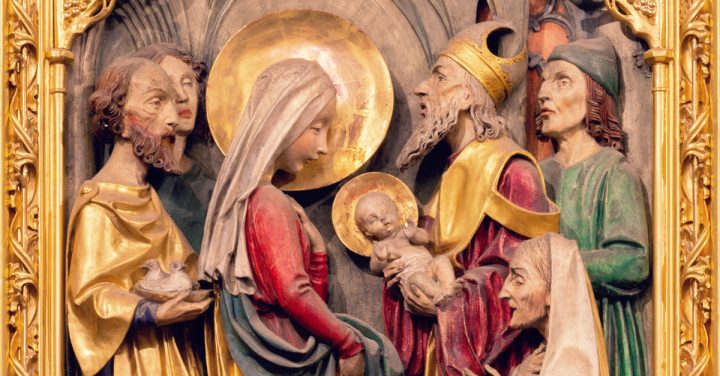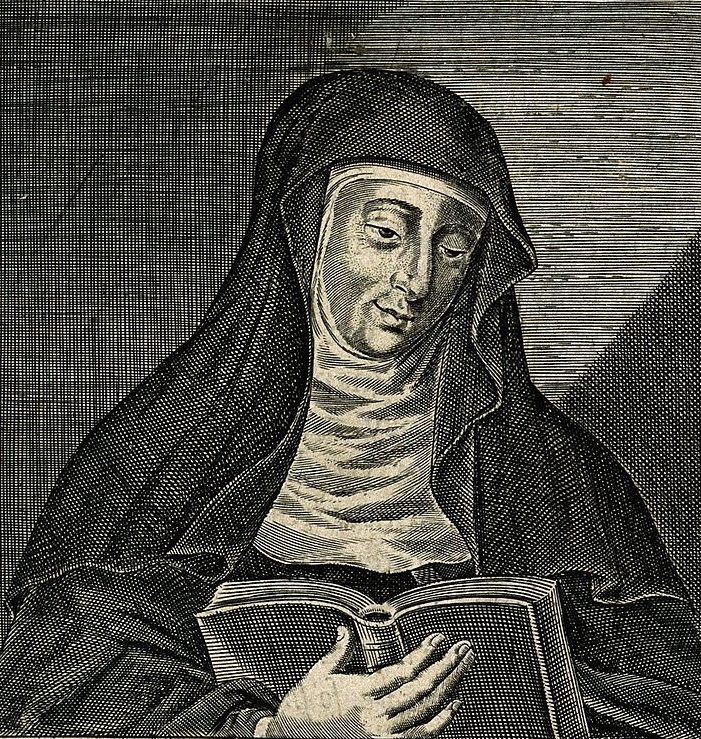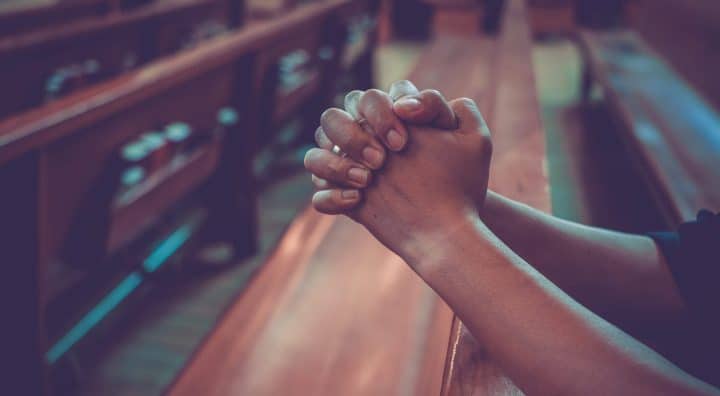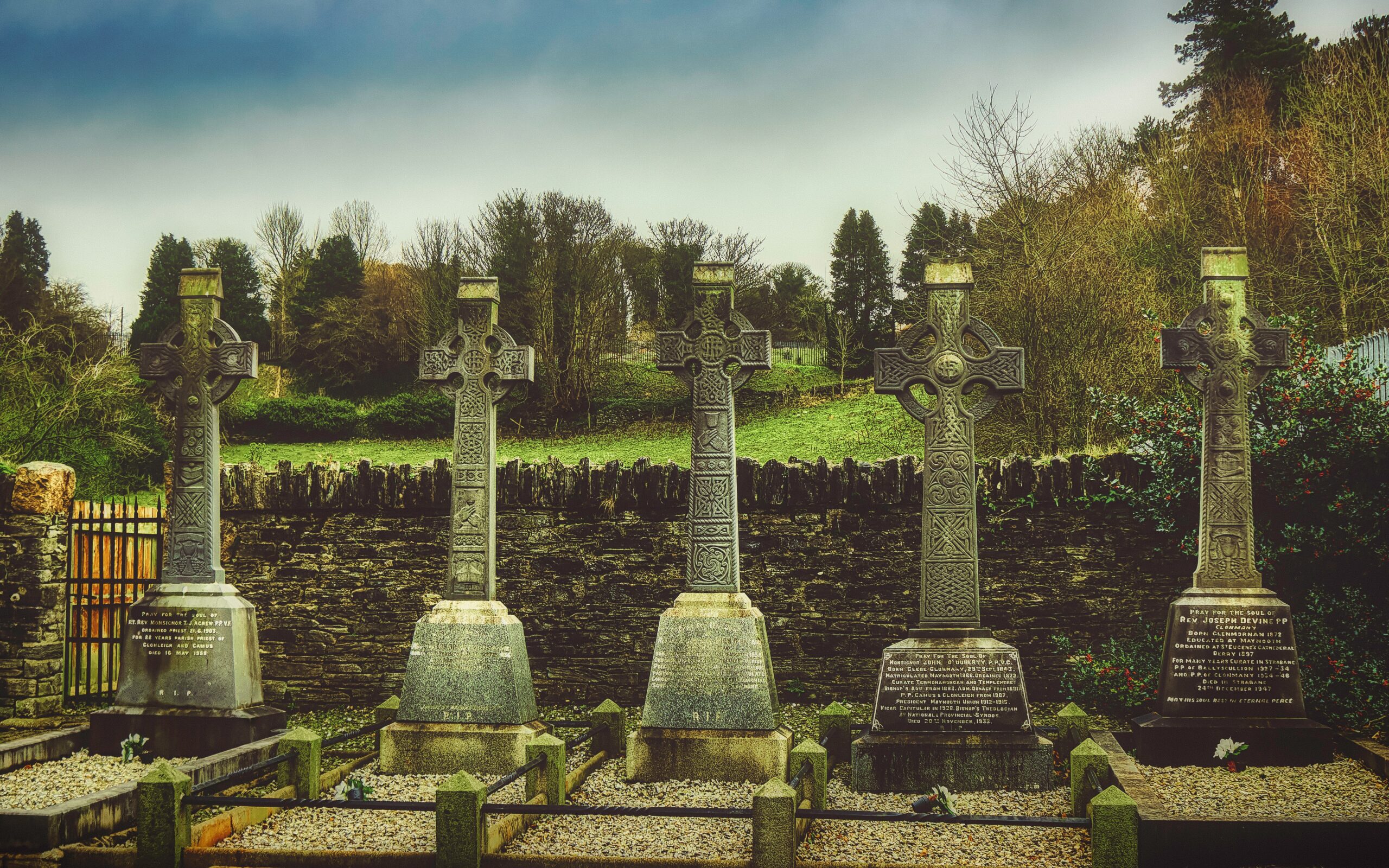
I have always loved the aesthetic of historic Irish Christianity. The 5th through 9th centuries (the golden age of the Irish Church) saw the fusion of Gaelic culture with Catholicism and the emergence of one of the most unique expressions of Christian culture anywhere in the world. The Catholic religion was first planted on the Emerald Isle by the great bishops Sts. Palladius and Patrick in the 5th century; after them came scores of holy abbots and abbesses, such as Sts. Enda, Finnian, Bridget, and Ciarán, who, through their pious lives, nurtured the faith. Catholic culture flourished on Éire, still manifest in a thousand different ways—the elegant insular style of decoration that illumines the Book of Kells and The Lindisfarne Gospels; the haunting monastic ruins of Clonmacnoise and Skellig Michael; the countless place names scattered throughout Ireland that call back to its illustrious saints; the lonely Celtic cross tombstones that rise persistently from the wild countryside.
So many holy people came out of Ireland’s golden age that it was nicknamed the Island of Saints and Scholars. Nor was their light for Éire alone, as missionary monks like Sts. Columba of Iona and Columbanus of Luxeuil carried the faith to the far flung corners of Europe. Others, like the famous St. Brendan, took it even farther abroad, crossing the Atlantic and settling even in remote Iceland (to this day Iceland has a town called Patreksfjörður, “Patrick’s Fjord,” founded by Irish monks in the 8th century).
In latter times the island was hallowed by numerous scholars and martyrs, such as the renowned St. Malachy, Archbishop of Armagh, or St. Oliver Plunkett, murdered by the English during the anti-Catholic hysteria of the early 17th century. Ireland’s Catholics suffered steadfastly for their faith during the hard years of the penal laws. Many left Ireland, taking their faith abroad. From Australia to California, the Irish priest was a staple of life across the English-speaking Catholic world. When Ireland finally gained her independence from Britain, she sought to enshrine her Catholic heritage in her laws. Accordingly, the Irish Constitution of 1937 begins with this solemn invocation:
In the Name of the Most Holy Trinity, from Whom is all authority and to Whom, as our final end, all actions both of men and States must be referred, We, the people of Éire, humbly acknowledging all our obligations to our Divine Lord, Jesus Christ, Who sustained our fathers through centuries of trial, Gratefully remembering their heroic and unremitting struggle to regain the rightful independence of our Nation…
Sadly, recent years have seen the Christian heritage of Ireland systematically undermined. The phrase “Irish spirituality” today conjures not the memory of Erin’s luminous saints, but rather an environmentalist neo-pagan ethos sharing more in common with New Age philosophy than historic Irish religion. This is exemplified in the case of St. Brigid of Kildare, who has been practically transmogrified into a pagan goddess—this despite the fact that there is zero literary or historical evidence that Brigid was ever anything but a Catholic holy woman.
Poor Brigid is not the only Irish Catholic saint to be transmuted into a neo-pagan icon. Indeed, modernity has witnessed the entire cultural edifice of Irish Christianity subject to a kind of paganization. A brief perusal of the “Celtic Spirituality” section of any religious bookstore will tell you all you need to know about how modernity has reimagined Irish Christianity. You will not find books about Jesus Christ, the Catholic Church, or Christian holiness, but about relaxation techniques, the Irish spirit wheel, “oneness with nature,” and meditative breathing exercises. It is heavily syncretized, often retaining Christian iconography only as Jungian archetypes while the underlying structure is thoroughly pagan. One scholarly article attempting to explain this belief system from a sociological standpoint observes that “contemporary Celtic spirituality routinely and syncretically blends Christian and Pagan elements of ideology.”[1] The same author goes on to say that Celtic spirituality, as it is understood today
…encompasses practices, beliefs, attitudes, and values that are loosely based on themes and remnants of Ancient Celtic traditions that survive in fairy tales and Celtic mythology… contemporary Celtic spiritual practices [are] widely regarded as embodying less authoritative, organized, institutional, and dogmatic phenomena than is generally implied by the term “religion.”[2]
This description gets to the heart of why this bastardized version of Celtic Christianity is so popular—it affords its adherents the opportunity to embrace what they consider an authentically western spirituality that is not tied to any dogma, institution, creed, or hierarchy. It retains the aesthetically pleasing aspects of Christianity without the creeds of the Church, offering a spirituality where the only criterion of truth is the subjective experience of the individual. In other words, it represents a Christianity shorn of its traditional strictures—Christianity as progressives wish all Christianity would become.
Irish Christianity needs an intervention to save it from becoming nothing but a subset of New Age pantheism. What is required is a new initiative of Irish Catholic studies that gives full due to the brilliance of Catholic Ireland (as opposed to treating it as a regrettable parentheses between ancient Gaelic paganism contemporary secularism). This could include:
1. A renewed study of the glorious saints of Ireland, of which most non-Irish Catholics are woefully ignorant. While we have all heard of St. Patrick and St. Brigid, how many of us know the stories of St. Kevin, St. Enda, or St. Molaise? Even the latter martyrs of the Elizabethan and Cromwellian persecutions are relative unknowns outside Ireland. When’s the last time you heard anyone talking about Bl. Muiris Mac Ionrachtaigh (d. 1584) or Bl. Concobhar Ó Duibheannaigh (d. 1612)?
2. There should be a greater focus on learning about the distinctive liturgical and monastic practices of the Irish, especially of the first millennium. Between the 5th and 8th century, the Irish monks produced eight distinct monastic rules. These rules and Irish monastic customs are seldom discussed save to contrast them with the Benedictine practices which supplanted them. The same is true for Irish liturgical practices, which were very ancient, dating back to the Romano-Gallic liturgies of the 5th century. Delving more into these points of religious observance can help us better appreciate the richness of the Irish tradition.
3. We could all stand to be more familiar with the physical heritage of Catholic Ireland—cultivating a deep love for the masterpieces of Irish illumination like the Book of Kells, learning about the archaeological monuments that fill Ireland from Belfast to Bantry, and familiarizing ourselves with the wonderful literary output of the Irish saints.
To this latter point, I myself have made two small contributions with new editions of The Life of St. Columba as told by St. Adomnán, and the Life of St. Brigid of Kildare. I am also working on an Irish history textbook for 6th-9th graders that will present the rich tapestry of Irish history in a way that gives full consideration to the Church’s integral place in Ireland’s history. This is a crowdfunded effort, which means you have a chance to help support the creation of this important project; please visit the project page to learn more.
May all the holy saints of Ireland intercede for us and for their beloved Éire.
[1] M.J. Drake Spaeth, “Celtic Spirituality,” in Encyclopedia of Psychology and Religion, ed. D.A. Leeming (Springer: Boston, MA. 2014), pp. 291
[2] Ibid.
Photo by K. Mitch Hodge on Unsplash

